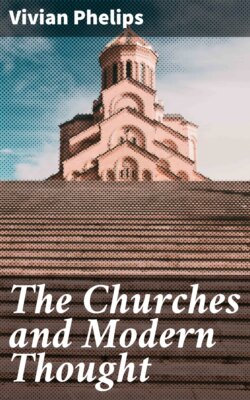Читать книгу The Churches and Modern Thought - Vivian Phelips - Страница 25
На сайте Литреса книга снята с продажи.
CONCLUDING REMARKS.
ОглавлениеBecause God once willed that men should have all kinds of absurd superstitions, and now wills that they should acknowledge their absurdity, are we, as Dr. Sanday appears to recommend, to keep up the pretence of believing in them on the ground that they are hidden mysteries? Surely not; but, speaking of mysteries, there is one which ought to be cleared, or at least receive a much fuller investigation than it has yet received at the hands of the Church. I refer to the fact that, ages before the Christian era, certain miracles were believed to have taken place, and that these were of precisely the same nature as those recorded in the Bible. For instance, numerous saviours were believed to have been born of virgins, to have died for the sins of mankind, to have risen again from the dead, and to have ascended into heaven. Thus not only are the Bible miracles scientifically impossible; not only are they unsupported by anything approaching adequate evidence; not only do the specious explanations of apologists serve but to confirm our scepticism concerning them; but we find that they are not even original—that they form part of ancient superstitions. That these fresh grounds for suspecting the truth of Christianity are of the gravest character will be shown in the chapter on Comparative Mythology.
1 Essay on “Possibilities and Impossibilities,” appearing in the Agnostic Annual for 1892.
2 Paley’s Evidences—Preparatory Considerations.
3 In his book, The Service of Man.
4 In his notable oration upon the apparitions of Llanthony.
5 See p. 132 of An Introduction to the Study of the Scriptures, by the Right Rev. W. Boyd Carpenter, Bishop of Ripon.
6 See p. 222 of Some Elements of Religion, Liddon.
7 See p. 51 of An Introduction to the Study of the Scriptures.
8 Extract from a sermon preached in St. Paul’s, Finsbury, on November 23rd, 1904.
9 This explanation has been given by the Rev. Samuel Cox, and it is quoted with approval by the Bishop of London on p. 63 of his little work, Old Testament Difficulties (S.P.C.K.).
10 See p. 41 of Old Testament Difficulties.
11 Article “Genesis.”
12 Miraculum means merely a wonderful thing. It is certainly a proper translation of σημεῖα (signs) and τέρατα (wonders), as used by New Testament writers.
13 By the author of Supernatural Religion. (Longmans, Green, and Co.; 1889.)
14 See Encyclopædia Biblica, article “Gospels,” paragraph 138 (e).
15 See article “Paul” in the Encyclopædia Biblica. Four of the Pauline Epistles are, however, pretty generally accepted. Five are hotly disputed; Professor Loofs, for example, rejects them.
16 See article “Epistolary Literature” in the Encyclopædia Biblica.
17 Swedenborgians (the New Jerusalem Church) are to be found scattered throughout almost every part of Christendom. In England, principally in Lancashire and Yorkshire, there are seventy-five societies with 6,063 registered members.
18 Eight persons in all testify to the apparition of the Virgin Mary in the Abbot’s meadow at Llanthony on September 15th, 1880.
19 Hodder & Stoughton, 1906.
20 See p. 31 of What is Christianity? (Williams & Norgate, 1904).
